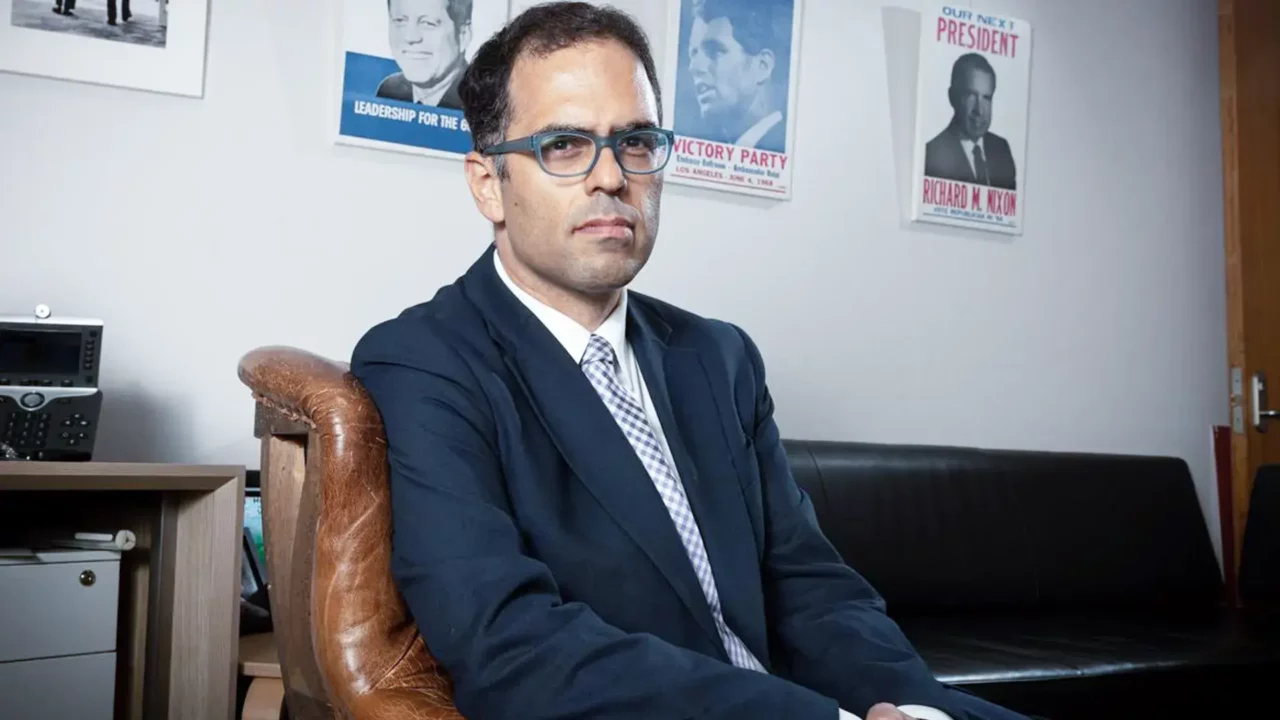Features > Property News & Insights > Financial Advice
The NSW Budget: Prioritizing Income from Housing Over Building More

Image from Glen McCurtayne/Sydney Morning Herald
KEY POINTS
NSW treasurer, Daniel Mookhey, handed down Labor’s first state budget in a decade this week, but housing allocations were dismal, leaving industry peak bodies disappointed.
The budget announced a $300 million investment to Landcom for the building of 4,600 homes by 2040, with at least 1,400 of them to be social and affordable housing.
It’s a small figure when you consider that NSW is expected to build 75,000 homes every year for five years as their share of the government’s ambitious 1.2 million new homes.
Homelessness NSW, a peak industry body, likened the funding allocated to housing as ‘crumbs’.
“We should not let the pursuit of budget savings punish the state’s most vulnerable people by putting off meaningful investment in housing and homelessness,” said HNSW A/CEO Amy Hains.
“We need to be honest about the scale of the challenge and the need for significant new investment – not window-dressing commitments.
“NSW does not need more vehicles for housing and homelessness finance; we need direct investment – now – in housing and services at a scale that is going to make a real difference in this crisis.”
According to Homelessness NSW, the state is falling short a whopping 221,500 social and affordable homes, and renters are increasingly becoming locked out of the hyper competitive rental market.
“Social housing has suffered from decades of underinvestment. The $70 million to build more social and affordable housing, and $35 million to maintain existing stock barely scratches the surface of what’s needed to reverse this,” said Ms Hains.
The CEO of Community Housing Industry Association NSW, Mark Degotardi, echoed this sentiment - pointing out that the pledged funding is not even enough to meet housing needs in a single Sydney LGA.
“The only commitment to build more affordable housing was through reinvestment in Landcom. This initiative is welcome but will only deliver around 1,400 homes by 2039-40,” said Mr Degotardi.
“That is roughly 80 affordable homes a year, at a time when the unmet housing need in NSW stands at over 220,000 homes. It is a drop in the ocean – it wouldn’t even meet the projected demand in any one of Sydney’s LGAs, let alone the statewide demand.
"That's about half the needed homes in Kogarah alone, in one LGA."
House prices and rents have skyrocketed off the back of high demand and low supply.
Migration, changes in housing trends, and construction industry constraints have landed Australia in the grips of a worsening housing crisis, and renters and first home buyers are paying for the worst of it.
There was a wide-spread expectation that housing would be front and centre in this year’s state budget, but more attention was paid to the infrastructure needed for additional housing.
In an appearance on ABC News, Premier Chris Minns divulged that the onus of providing NSW’s share of 1.2 million homes would fall largely on the private market - essentially onto mum and dad investors.
“We're always going to take help from the Commonwealth Government, particularly when it comes to houses. Part of that will be Landcom and the Government coming up to the table and producing houses but the truth of the matter is, and this in relation to housing right across the country, if we are going to produce 75,000 houses completions every single year, we have to rely on the private sector, and that means delivering private capital into New South Wales, it means more urban infill, it means more apartments and units,” said Mr Minns.
The budget’s $1.5 billion investment into infrastructure across Sydney, the Lower Hunter, Central Coast and the Illawarra will go some way to enable such investment, but planning and approval pathways and construction industry constraints will likely remain the greatest barriers.
The irony
The irony in the NSW budget is that it forecasts a surplus in 2024 and 2025, based on greater revenue generated from stamp duty.
State revenue forecasts have been revised upwards by a whopping $14 billion over the next four years, with the budget papers crediting growth in the property market and wages for the more optimistic projections.
This year alone, revenue is expected to climb 5.8 percent to $112.4 billion, in an increase of $3.8 billion more than was initially forecast at the Pre-election budget update.
Climbing property prices and increasing action in the property market as we pass the peak of the cash rate mean that stamp duty will become increasingly profitable for the state government’s tax base.
Promisingly, NSW Treasurer Daniel Mookhey conceded that the additional $9.5 billion in transfer duty revenue (over the next four years) would be partially spent on addressing housing affordability via housing reforms, as reported by property journalist Campbell Kwan at the AFR.
So as far as the NSW budget goes, infrastructure will get a much needed boost in specific regions, but the ambitious Housing Accord targets remain an issue left for property investors to tackle.
Stay Up to Date
with the Latest Australian Property News, Insights & Education.




.png?width=292&height=292&name=Copy%20Link%20(1).png)
 SIGN UP FOR FREE NEWSLETTER
SIGN UP FOR FREE NEWSLETTER





.jpg?width=1920&height=1080&name=Warning%2c%20You%20Might%20Be%20Facing%20Higher%20Taxes%20Soon%20(1).jpg)





.png?width=1920&height=1080&name=Rate%20Drops%20Signal%20BIGGEST%20Property%20Boom%20in%20DECADES%20(1).png)

.jpg?width=1920&height=1080&name=Labor%20vs%20Liberal%20These%20Housing%20Policies%20Could%20Change%20the%20Property%20Market%20Forever%20(1).jpg)
.jpg?width=1920&height=1080&name=QLD%20Slashes%20Stamp%20Duty%20Big%20News%20for%20Investors%20%26%20Home%20Buyers%20(1).jpg)
.jpg?width=1920&height=1080&name=Trump%20Just%20Slapped%20Tariffs%20%E2%80%93%20Here%E2%80%99s%20What%20It%20Means%20for%20Australia%20(1).jpg)
.jpg?width=1920&height=1080&name=Federal%20Budget%202025%20More%20Debt%2c%20No%20Housing%20%E2%80%93%20Here%E2%80%99s%20What%20You%20Need%20to%20Know%20(1).jpg)
.jpg?width=1920&height=1080&name=Australias%20Housing%20Crisis%20is%20about%20to%20get%20MUCH%20Worse%20(New%20Data%20Warns).jpg)
%20(1).jpg?width=1920&height=1080&name=Australias%20RENTAL%20CRISIS%20Hits%20ROCK%20BOTTOM!%20(2025%20Update)%20(1).jpg)
%20(1).png?width=1920&height=1080&name=Is%20Adelaide%20Still%20a%20Good%20Property%20Investment%20(2025%20UPDATE)%20(1).png)
.jpg?width=1920&height=1080&name=RBA%20Shocks%20with%20Rate%20Cuts!%20What%E2%80%99s%20Next%20for%20Property%20Investors%20(1).jpg)
%20(1).jpg?width=1920&height=1080&name=I%20Predict%20The%20Feb%20Rate%20Cut%20(My%20Price%20Growth%20Prediction)%20(1).jpg)
.png?width=1920&height=1080&name=Why%20Property%20Prices%20Will%20Rise%20in%202025%20Market%20Predictions%20(1).png)
.jpg?width=1920&height=1080&name=Why%20Investors%20Are%20Choosing%20Apartments%20Over%20Houses%202%20(1).jpg)
.jpg?width=1920&height=1080&name=Why%20Rate%20Cuts%20Will%20Trigger%20A%20Property%20Boom%20(1).jpg)
.jpg?width=1920&height=1080&name=Retire%20On%202Million%20With%20One%20Property%20(Using%20SMSF).jpg)
.jpg?width=1920&height=1080&name=4%20Reasons%20Why%20You%20Should%20Invest%20in%20Melbourne%20Now%20(1).jpg)
%20(1).jpg?width=1920&height=1080&name=Old%20Property%20vs%20New%20Property%20(Facts%20and%20Figures%20Revealed)%20(1).jpg)
%20(1).jpg?width=1920&height=1080&name=Will%20The%20New%20QLD%20Govt%20Create%20a%20Property%20Boom%20or%20Bust%20(My%20Prediction)%20(1).jpg)
%20Scott%20Kuru%20(1).jpg?width=1920&height=1080&name=Inflation%20Hits%20Three-Year%20Low%20(Will%20RBA%20Cut%20Rates%20Soon)%20Scott%20Kuru%20(1).jpg)
.jpg?width=1920&height=1080&name=How%20to%20Buy%20Investment%20Property%20Through%20SMSF_%20The%20Ultimate%20Guide%20(1).jpg)
.jpg?width=1920&height=1080&name=Victoria%20Slashes%20Stamp%20Duty%20Melbourne%20Set%20to%20Boom%20Scott%20Kuru%20(1).jpg)
.png?width=1571&height=861&name=Are%20Foreign%20Buyers%20Really%20Driving%20Up%20Australian%20Property%20Prices%20(1).png)
.jpg?width=1920&height=1080&name=The%20Single%20Factor%20That%20Predicts%20Property%20Growth%20Regions%20(1).jpg)
%20Scott%20Kuru%20(1).jpg?width=1920&height=1080&name=My%20Prediction%20On%20Rates%20%26%20Negative%20Gearing%20(Market%20Crash)%20Scott%20Kuru%20(1).jpg)

-1.png?width=1920&height=1080&name=Major%20Banks%20Cut%20Rates%20Will%20RBA%20Follow%20Suit%20(Sept%20Rate%20Update)-1.png)
%20Scott%20Kuru-1.png?width=1920&height=1080&name=Rate%20Cut%20Coming%20What%20New%20Zealands%20Move%20Means%20for%20Australia%20(Sept%20Prediction)%20Scott%20Kuru-1.png)
%20(1).jpg?width=1920&height=1080&name=Buy%20when%20the%20interest%20rates%20are%20high!%20(Why%20you%20must%20buy%20now!)%20(1).jpg)
.jpg?width=1920&height=1080&name=Carms_Revised%20Taxes%20Due%20Aug%209%20YT%20Thumbnail02%20(1).jpg)
.jpg?width=1920&height=1080&name=Carms_Too%20Little%20Too%20Late%20Aug%207%20YT%20Thumbnail01%20(1).jpg)









.jpg?width=1920&height=1080&name=Carms_Rate%20Drop%20In%20July%20Jun%2010%20YT%20Thumbnail02%20(1).jpg)
.jpg?width=1920&height=1080&name=Carms_Own%20a%20Property%20V6%20Jun%205_YT%20Thumbnail%20(1).jpg)









.png?width=1920&height=1080&name=Artboard%201%20(3).png)






.jpg?width=1920&height=1080&name=YT%20thumbnail%20%20(1).jpg)

